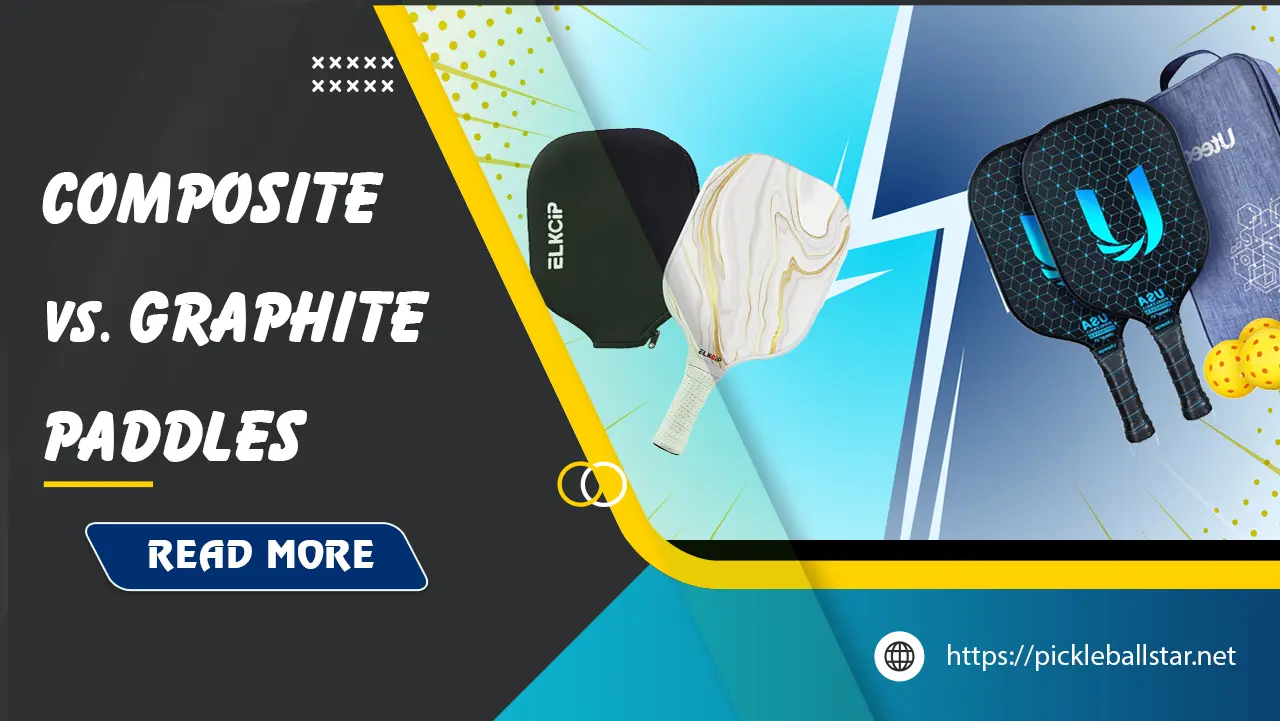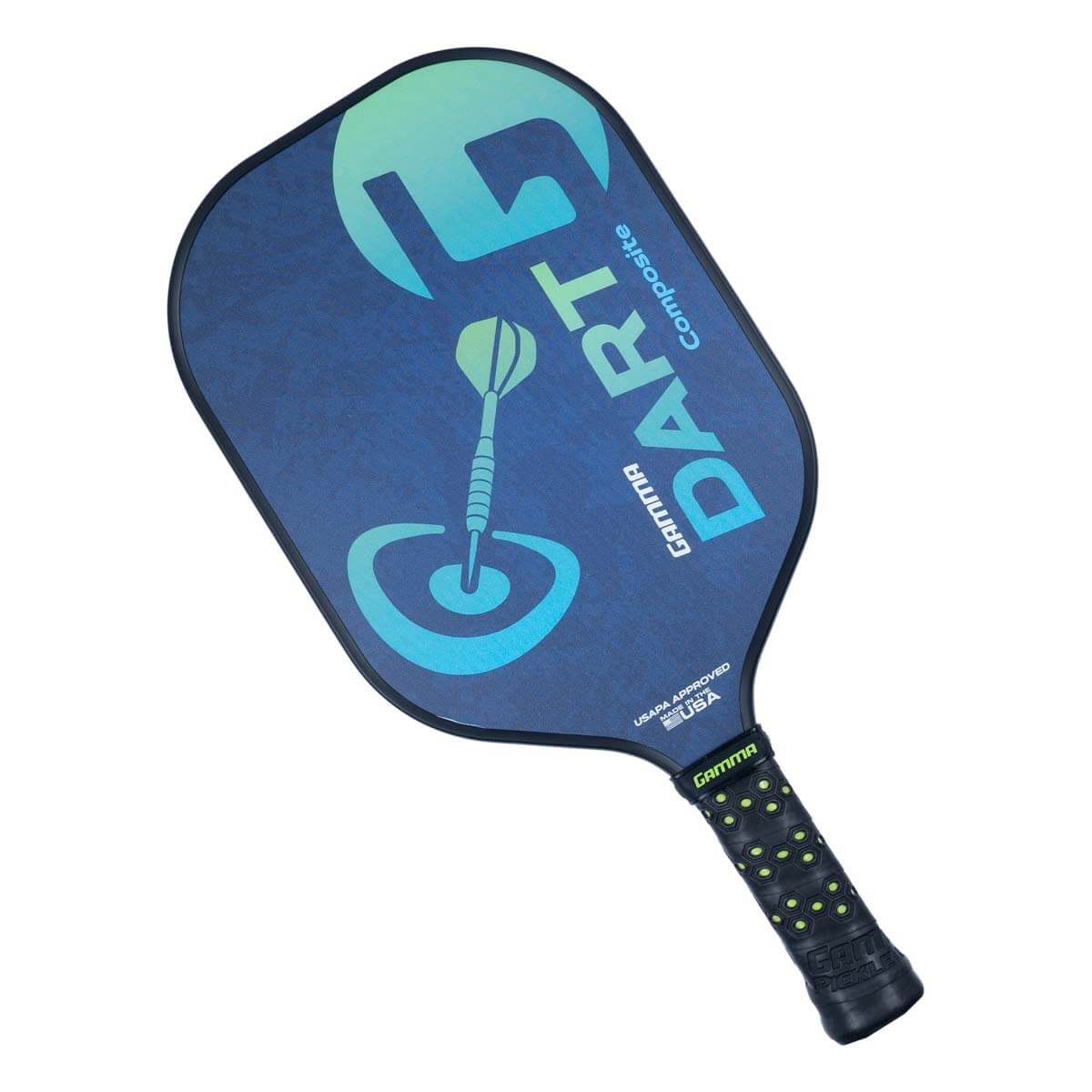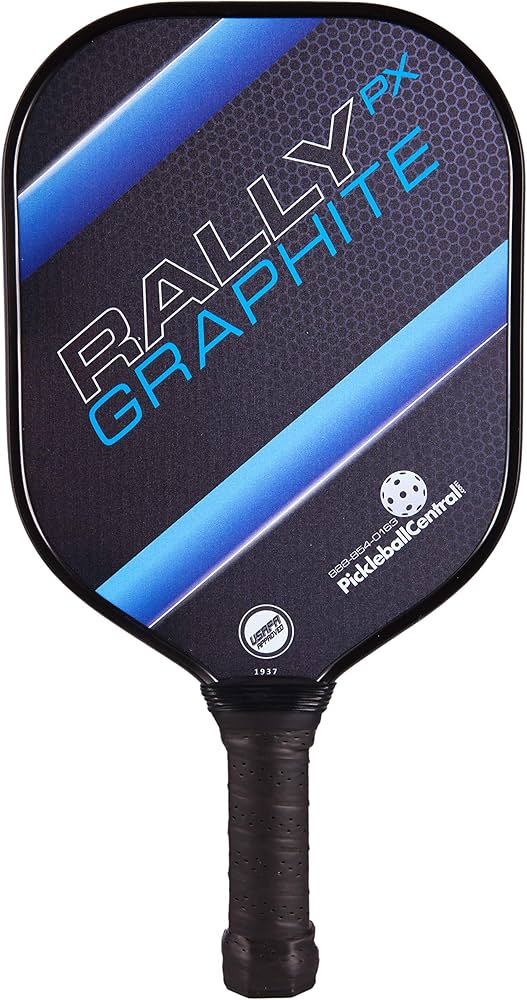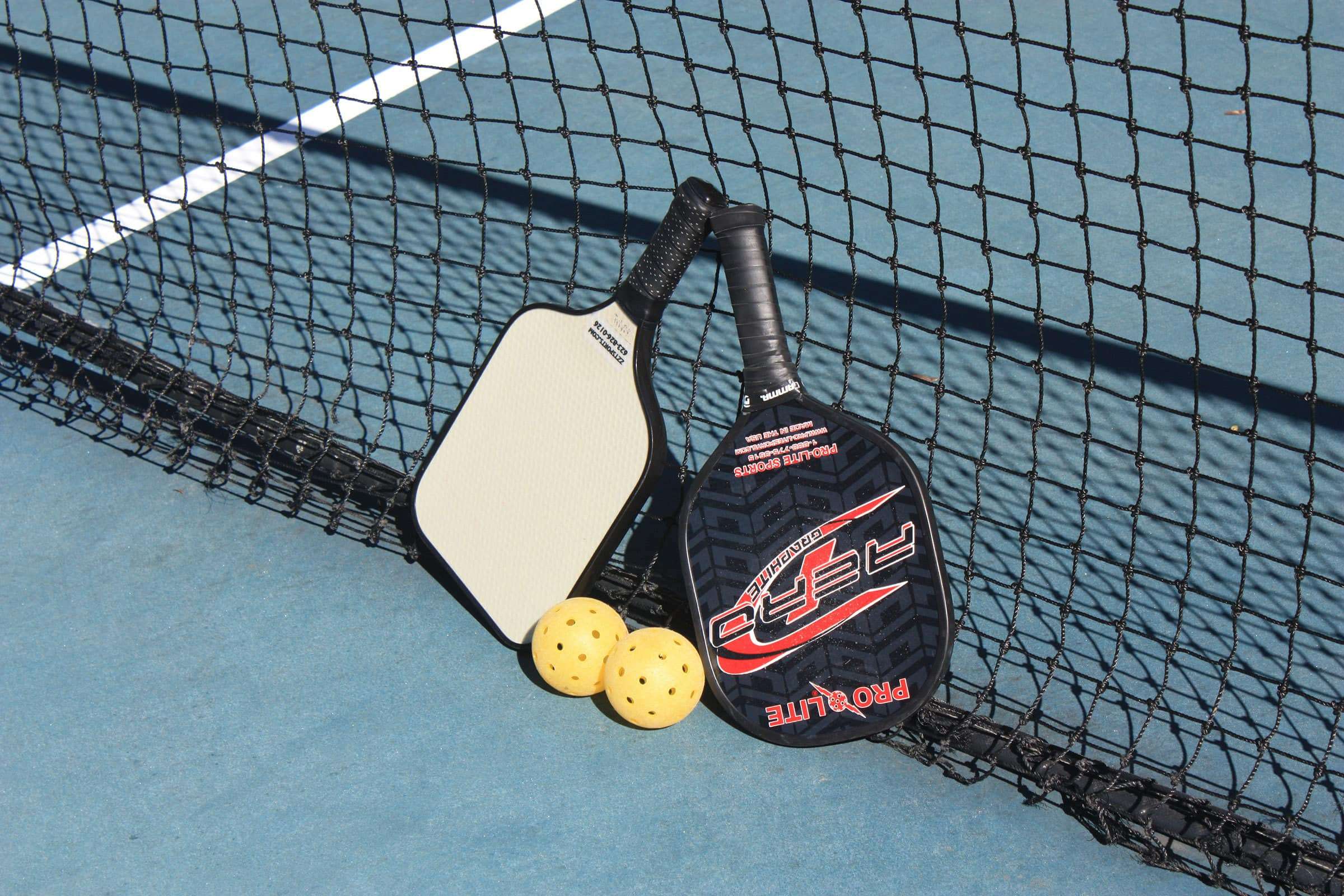Graphite vs Composite Pickleball Paddles: Unveiling the Performance and Feel of Each Material
Pickleball is quickly gaining popularity, and as with any sport, having the right equipment can make a world of difference. A significant component of this equipment is the paddle, and two main types dominate the market: Graphite vs Composite Pickleball Paddles. Understanding the subtleties and strengths of each can guide you in making an informed choice that aligns with your playing style and goals. Let’s dive into this detailed comparison to help you decide which type of paddle suits you best.

Composite Pickleball Paddles: The Power of Innovation
A Blend of Materials: Unlocking Versatility and Performance
Composite pickleball paddles are engineered with a combination of materials, often including fiberglass, carbon fiber, and various polymers. This fusion creates paddles with a unique blend of power, control, and flexibility. The composite material is typically layered over a core, which could be made of materials such as aluminum, polymer, or Nomex.

- Fiberglass Layer: This layer tends to add a certain level of flexibility and give, enhancing the paddle’s ability to absorb impact and deliver a softer feel during play.
- Carbon Fiber: Known for its strength and lightweight nature, carbon fiber contributes to the rigidity and overall durability of the paddle, helping players with powerful shots without bending or breaking.
- Polymer Core: Providing a balance between strength and weight, the polymer core helps manage the paddle’s weight and enhances its control properties, making it adaptable for different playing styles.
By combining these pickleball paddle materials, manufacturers can craft paddles that cater to a wide range of player needs, from beginners seeking a larger sweet spot to advanced players demanding precision and control.
Enhanced Durability and Response: A Long-Lasting and Responsive Paddle
One of the standout features of composite paddles is their durability. The blend of materials results in a paddle that can withstand rigorous play without chipping or cracking easily. This means your investment in a composite paddle can last longer, providing great value over time.
- Strength and Stiffness: The presence of carbon fiber and fiberglass layers ensures the paddle remains strong and stiff, retaining its performance characteristics even after extended use.
- Flexibility: The layered construction allows for a degree of flexibility, enhancing the paddle’s responsiveness and giving players a better feel for the ball.
- Consistency: Due to their robust construction, composite paddles tend to have a consistent performance level, helping players maintain their game across different sessions.
Cost-Effective Options without Compromise
Composite paddles often come in at a lower price point compared to their graphite counterparts. This affordability does not mean you have to compromise on quality or performance. For those just starting or playing recreationally, composite paddles provide an excellent balance of features at a budget-friendly cost.
However, it’s essential to consider that not all composite paddles are created equal. High-quality models balance power, control, and durability more effectively, offering a superior playing experience.
Graphite Pickleball Paddles: A Classic Material with Refined Performance
The Power of Graphite: A Responsive and Controllable Paddle
Graphite Pickleball paddles are renowned for their lightweight and responsive nature, crafted entirely from graphite material. This characteristic makes them particularly appealing to advanced players who value control and precision.

- High Responsiveness: Due to graphite’s lighter weight, these paddles provide a quick response and allow for faster swing speeds, which can translate into powerful shots and rapid exchanges.
- Precision and Control: The stiffness of graphite ensures that energy transfer from the paddle to the ball is efficient, providing players with a high degree of control, especially during delicate touch shots.
- Minimal Vibration: High-quality graphite paddles are designed to minimize vibration, reducing discomfort and making for a more enjoyable playing experience.
A Smoother Feel and Control: Ideal for Finesse Players
Graphite paddles excel when it comes to finesse and control. The material’s inherent characteristics make these paddles suitable for players who prefer a strategic approach, focusing on placement and precision rather than raw power.
- Delicate Touch: Graphite paddles allow for a delicate touch, making them ideal for dinking and other soft shots where control is paramount.
- Balanced Weight Distribution: The even weight distribution enhances players’ ability to maneuver the paddle, offering confidence and control during play.
- Enhanced Feedback: Because of their rigidity, graphite paddles provide clear and immediate feedback on each shot, helping players fine-tune their technique and improve their overall game.
Higher Cost, Higher Reward
While graphite paddles tend to be more expensive, their performance benefits often justify the cost, especially for serious players. Investing in a high-quality graphite paddle can provide a competitive edge, helping you refine your skills and elevate your game.
Graphite vs Composite Pickleball Paddles: Choosing the Right Paddle for You

Playing Style: Matching Paddle Material to Your Game
Your playing style is a critical factor in selecting the right paddle:
- Power-Oriented Players: If you prioritize powerful serves and rapid shots, a composite paddle with a rigid core may boost your shot speed and efficiency.
- Control-Focused Players: For those who concentrate on precision and strategic placement, a graphite paddle offers superior control and responsiveness, enhancing your finesse on the court.
- Balanced Approach: Players who seek a mix of power and control may find composite paddles with a medium-weight core ideal, offering a well-rounded performance.
Skill Level and Experience: Considering Material for Different Players
Different paddles suit varying levels of experience:
- Beginners: Composite paddles are often recommended for beginners due to their larger sweet spots, forgiving nature, and affordability.
- Intermediate Players: Those with some experience may appreciate the balance of power and control offered by high-quality composite paddles.
- Advanced Players: Graphite paddles are well-suited for seasoned players who demand precision, control, and responsive feedback in competitive settings.
Budget and Investment: Balancing Performance and Cost
When choosing between composite and graphite paddles, it’s important to weigh your budget against performance needs:
- Composite Paddles: Often more affordable, making them accessible for beginners and recreational players who want quality without breaking the bank.
- Graphite Paddles: Typically more expensive but offering superior performance and durability, which may be worth the investment for serious or competitive players.
Common Questions
Are composite paddles always better than graphite paddles?
There is no definitive answer, as the “better” paddle depends on individual preferences, playing style, and experience. Here’s a comparison to help understand:
| Criteria | Composite Paddles | Graphite Paddles |
|---|---|---|
| Weight | Generally heavier | Lighter |
| Durability | High, resistant to chips | High, but can be slightly prone to damage |
| Control | Good, softer feel | Excellent, precise feel |
| Power | Moderate | High |
| Cost | More affordable | Higher cost |
What are some of the key differences between composite and graphite paddle construction?
The construction differs significantly:
- Composite Paddles often feature multiple layers of materials such as fiberglass and carbon fiber over a polymer core.
- Graphite Paddles are typically made with a single sheet of high-quality graphite, offering lightweight and rigidity.
What are some popular pickleball paddle brands that offer both composite and graphite options?
Brands such as Selkirk Sport, Paddletek, and Engage Pickleball offer a wide range of both composite and graphite paddles, known for high performance and quality.
How do composite and graphite paddles compare in terms of price, durability, and performance?
- Price: Composite paddles are more budget-friendly, while graphite paddles are pricier but offer advanced performance features.
- Durability: Both are durable, but composites might resist wear and tear better under heavy use. Graphite paddles are robust but can be more susceptible to damage from mishits or improper handling.
- Performance: Graphite paddles often outshine in responsiveness and control, making them suitable for advanced play. Composite paddles offer a good balance and are more versatile for a range of skill levels.
Conclusion
In summary, both composite and graphite pickleball paddles have their distinct advantages, catering to different playing styles and preferences. Composite paddles provide durability, versatility, and affordability, making them an excellent choice for beginners and budget-conscious players. Graphite paddles, on the other hand, offer superior control, responsiveness, and performance, appealing to advanced players seeking precision and finesse.
Ultimately, the best paddle for you will depend on your individual needs, playing style, and budget. It’s always a good idea to try out different paddles before making a final decision. Exploring the world of composite and graphite paddles can help you find the one that unlocks your full potential on the court. Experience the power, control, and feel of each material to discover the paddle that elevates your pickleball game to the next level.
